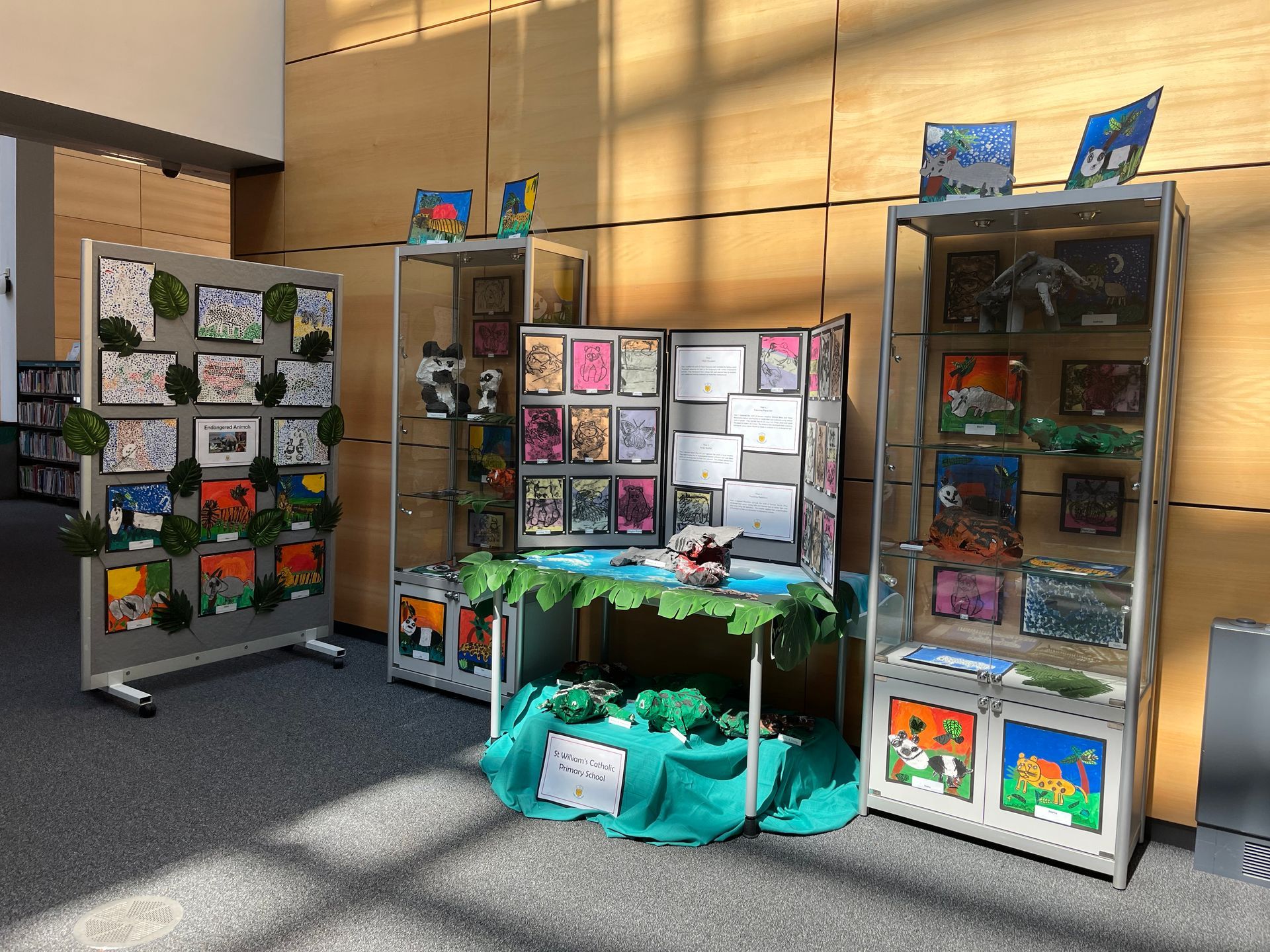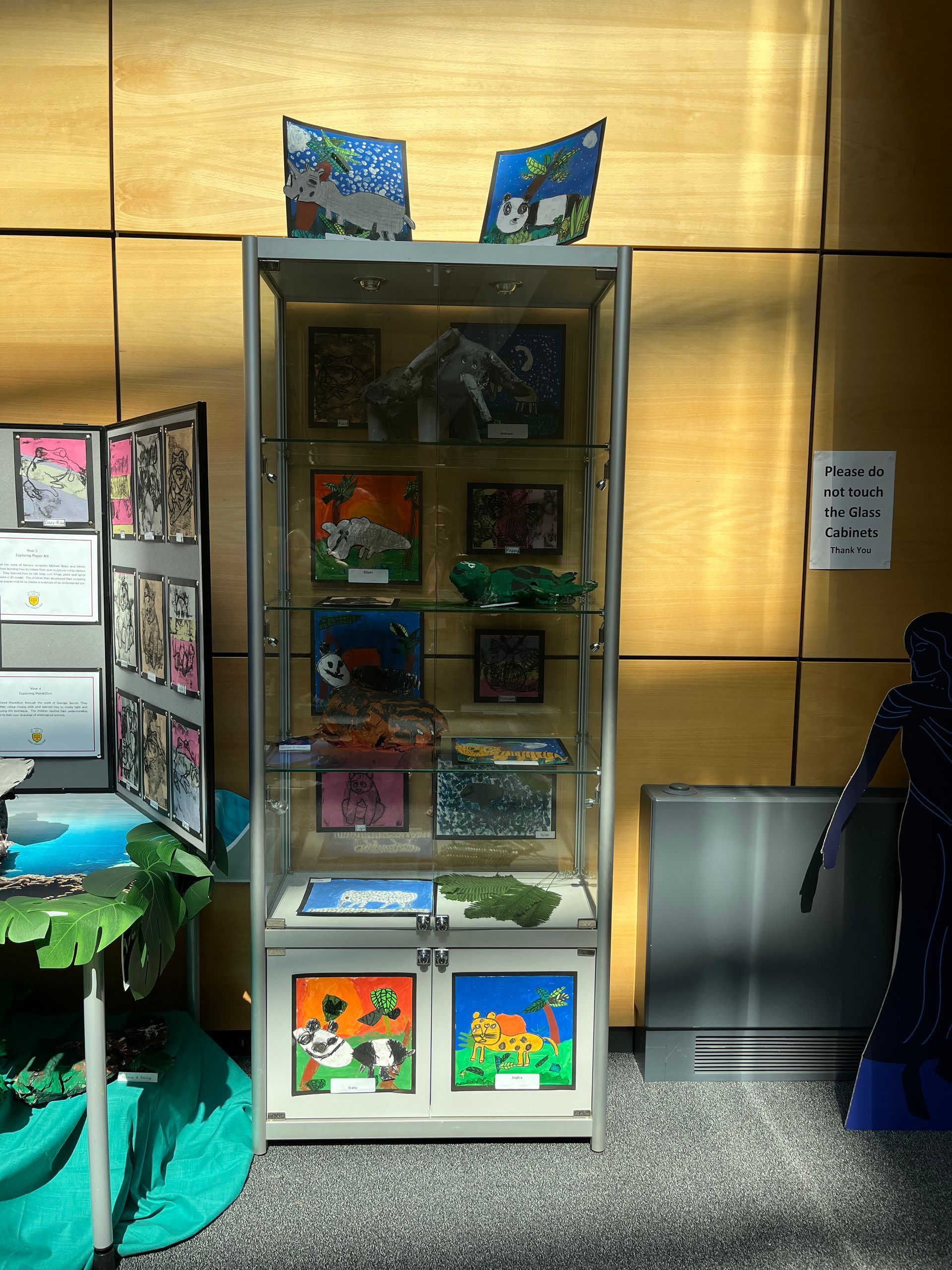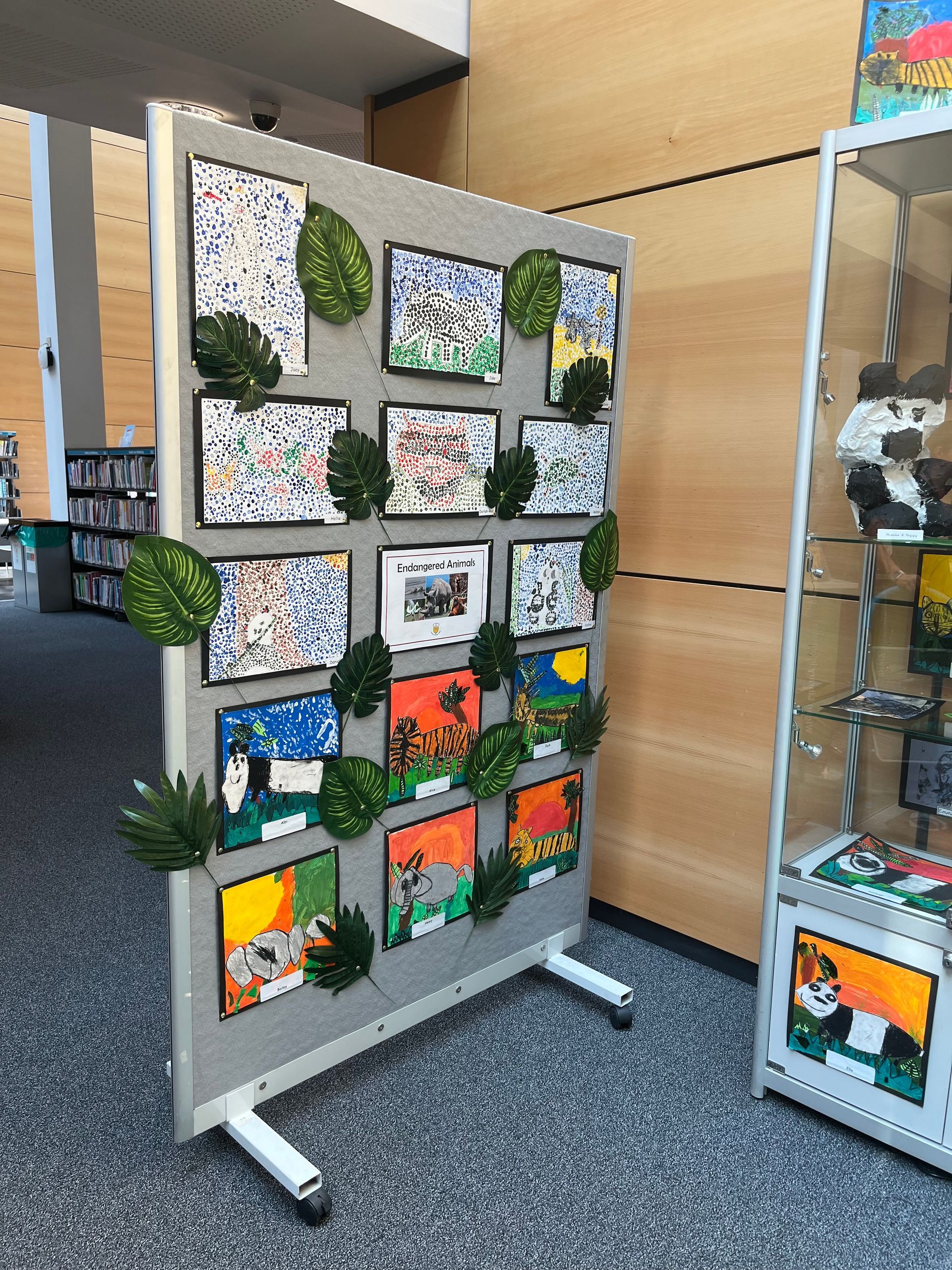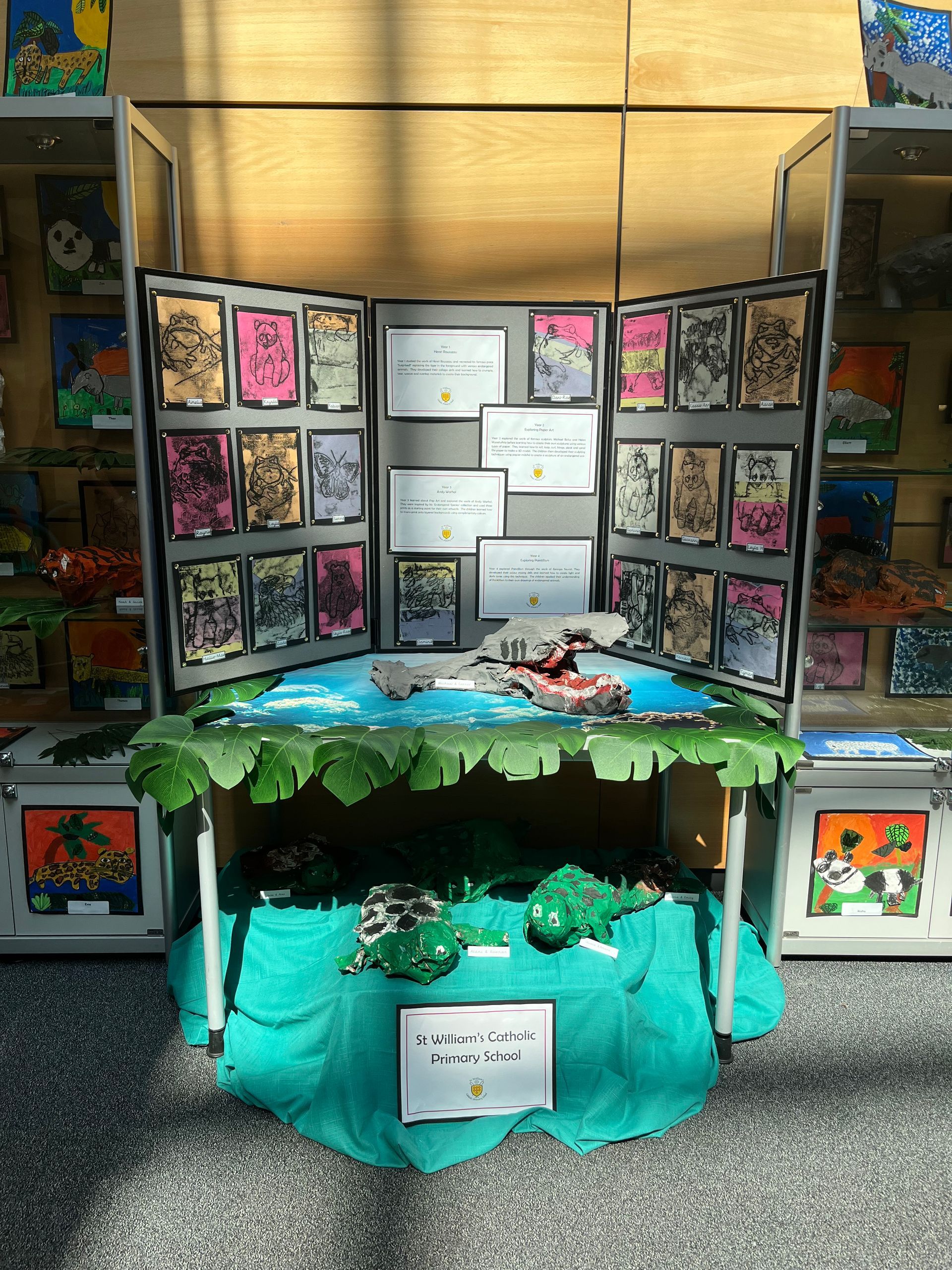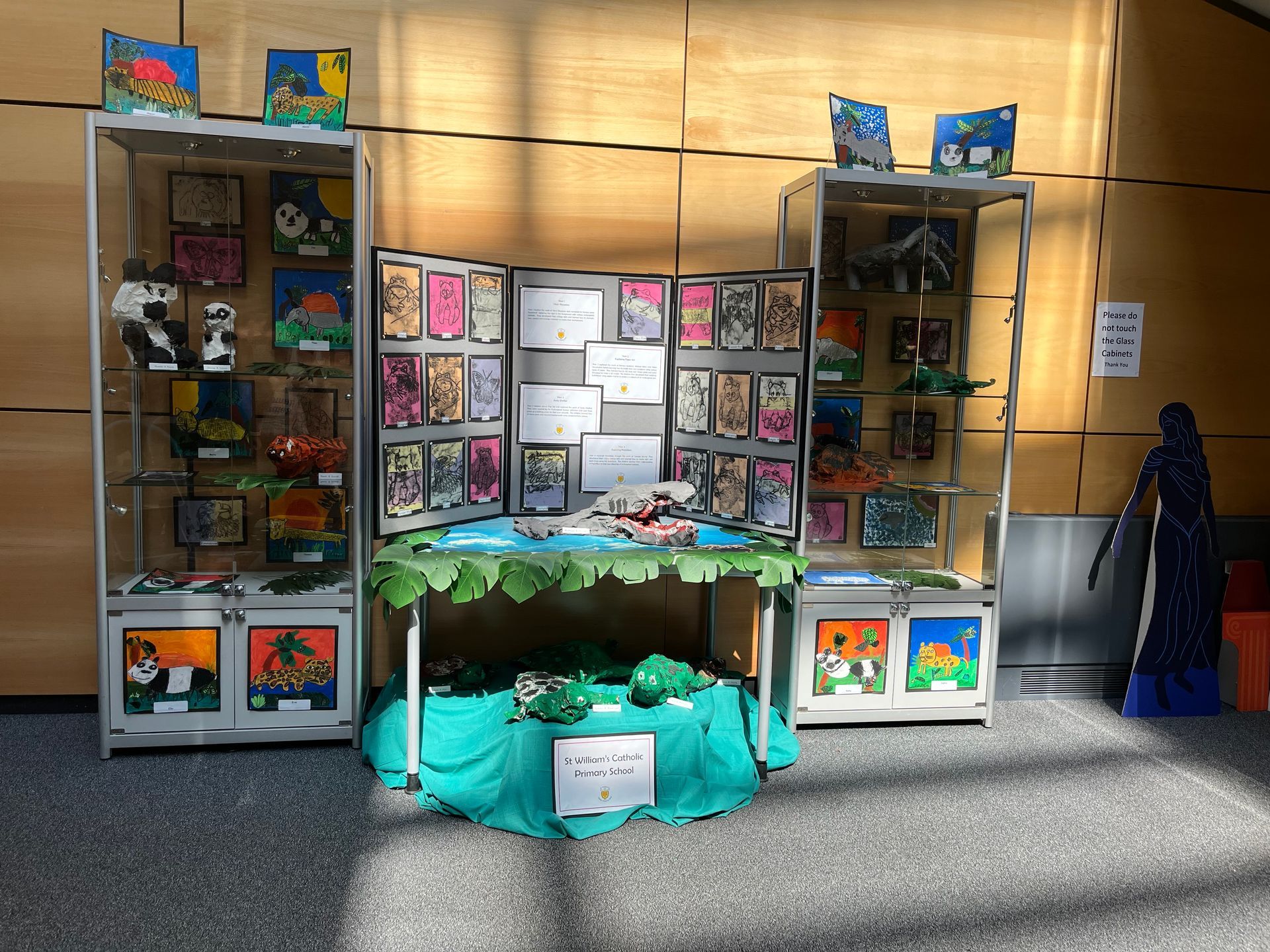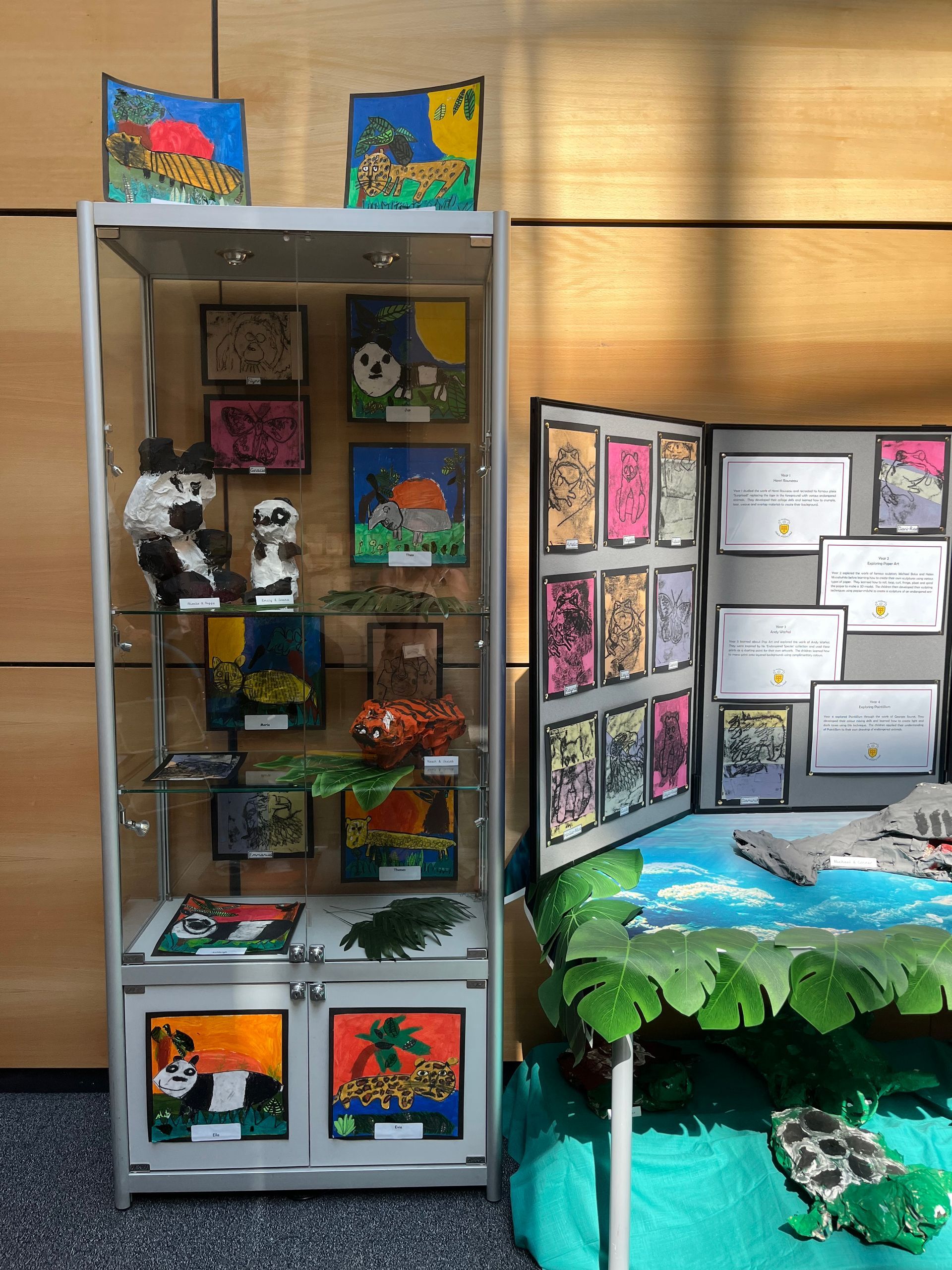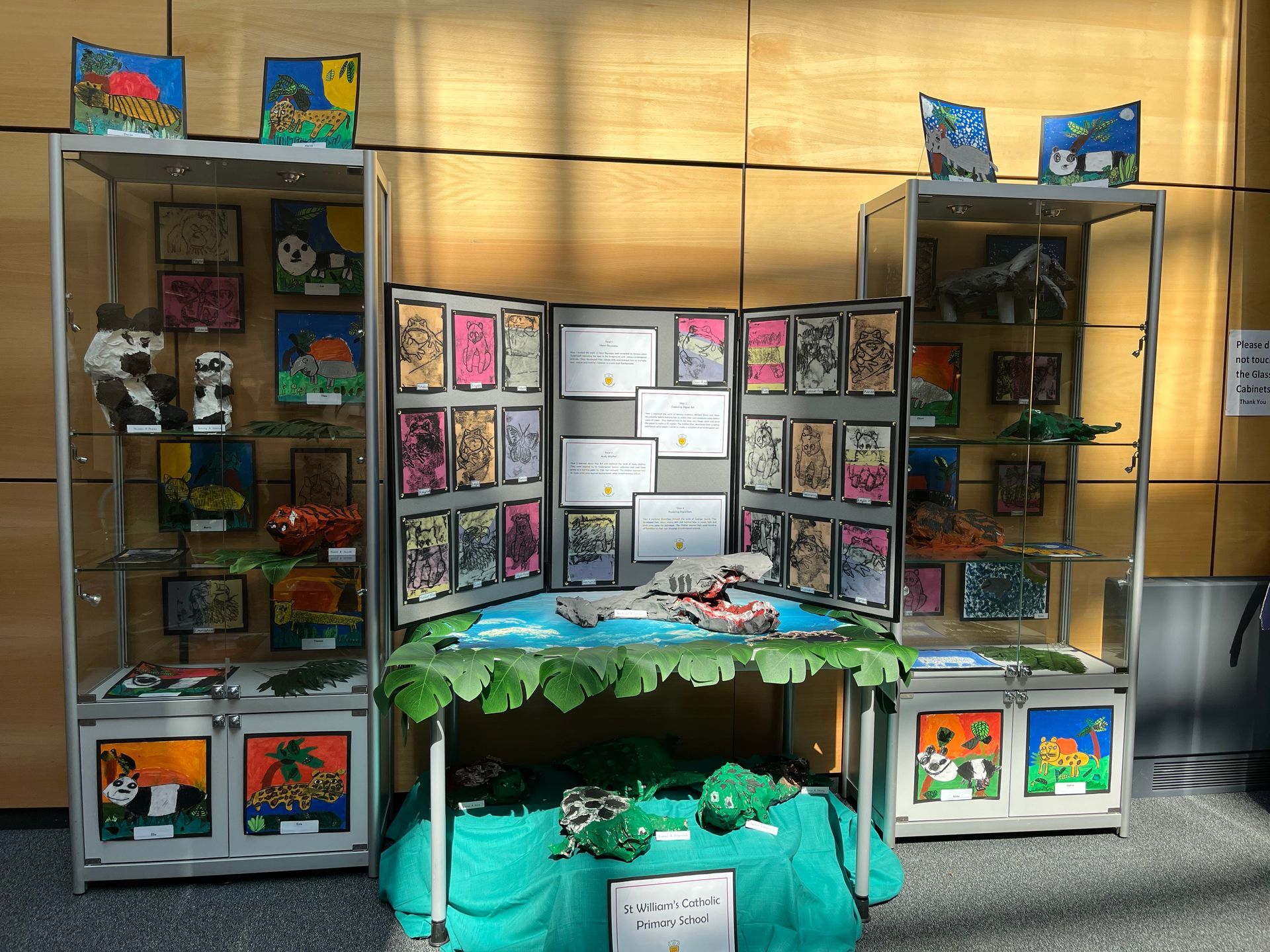The class teachers at St William’s Catholic Primary are responsible for teaching and developing the Art and Design curriculum, ensuring that all pupils are taught the statutory requirements within the National Curriculum.
We aim to plan our Art and Design programme of study with a creative approach that is tailored to meet the needs of the children within our school, ensuring that regular cross curricular opportunities are provided to enhance the teaching of other subjects. The Art and Design curriculum has been carefully planned to develop a clear progression of skills within each year group and to provide the children with both the substantive and disciplinary knowledge that they need to become an Artist.
The delivery of Art is taught as series of lessons which follows the Research, Explore, Develop, Create and Evaluate process. This will allow the children to gain a deeper understanding of the skills and formal elements of Art as they research and explore the work of a range of artists and movements throughout history. The children will then be given the opportunity to develop their own ideas of what they are working towards and their own style using the skills they have acquired before creating a final piece. Evaluations should be ongoing throughout the unit as the children should be encouraged to evaluate their own individual work, the work of their peers and also the work of artists and craftsmen.
We teach Art as a discrete subject every other half term. Each year group will explore the formal elements of Art within the Autumn term, develop their creativity through a different Art form within the Spring term and conduct an in-depth study of an Artist, Craftsman or Sculptor within the Summer term. Therefore, by the end of Year 6, all children should have a wealth of knowledge to support them on their journey to become cultural citizens.

